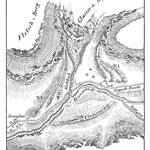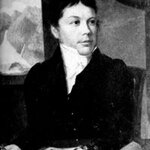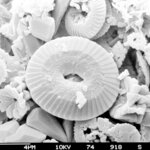Science History

Ignaz Venetz - Climate Change Pioneer - #2
Ignaz Venetz was, in 1821, awarded a prize of 300 francs for his memoire by the Schweizerische Naturforschende Gesellschaft - the Swiss Natural Science Society. It is my firm opinion that, accordingly, the date of publication should be cited as 1821: the date of the award of the prize, and not 1833 which was the date of its re-publication in a bound archive of science papers.
Previously, the discovery of fossils of tropical species in both temperate and cold climates had puzzled geologists. There had been much philosophical speculation…

Ignaz Venetz - Climate Change Pioneer
Climate has always changed - but we have not always known it.
Events following 1816 - the year without a summer - led to a major controversy in which the scientific consensus on the one hand was countered by dogma on the other. On reading the history of that great controversy, one gets a strong sense of Déjà vu.
The scientific consensus that our planet's climate has always undergone change, arose from researches which began following a meeting of the Schweizerische Naturforschende Gesellschaft - the Swiss Natural Science Society - in Zürich, October…
Thought experiments are mental exercises, or imaginative experiments, which are often not possible to perform with current technology. They appear to be particularly popular in physics and philosophy, but are by no means limited to these two fields. There are a couple of thought experiments that employ demons. After all, an imaginary entity with awesome powers can be quite useful in a thought experiment, can’t it?
Three of the most famous thought experiments that center around a demon with amazing capabilities, are:
Descartes’ Evil Demon
René Descartes. (Source…

History Mystery #3 - Land, Law and Science
"Words are to the Anthropologist what rolled pebbles are to the Geologist — battered relics of past ages often containing within them indelible records capable of intelligent interpretation..."John Herschel
While investigating the mystery of The Sawdust Coast, I came across another mystery: the Raft of Atchefalaya. Just as Peter Freuchen's autobiography was my first hint of sawdust in the Lena Delta sediments, so also John Herschel's 1875 book Physical Geography of the Globe was my first hint of trees forming substantial land masses in the…

History Mysteries #2 - The Sawdust Coast
According to Peter Freuchen, writing of his travels in Siberia, circa 1936, the tundra coast near Tiksi in the Lena Delta was fringed with logs and the sea bottom contained "hundreds of thousands of years of sawdust". To the best of my knowledge, this remarkable phenomenon - a Siberian 'sawdust coast' - has never been studied scientifically.
Peter Freuchen
Peter Freuchen was a scientist. However, for much of his life he was known to various people according to the various talents which make him seem like a character from a work of…

History Mysteries #1 - Who Shot The Tomatoes?orThe Astonishment of a Sailor on Finding Buckshot in His Portion of Tomatoes.
Hidden in the details of the Jeannette Expedition one finds a factor in common with the Franklin Expedition: lead poisoning.
The Jeannette Expedition
The USS Jeannette was formerly HMS Pandora. She was purchased from the Royal Navy by Allen Young, used for his Arctic voyages of 1875-1876 and then sold to James Gordon Bennett, Jr. in 1878. James Gordon Bennett, Jr., best known as Gordon Bennett, was the owner of the New York Herald. He was famous…

Now we come to the second part of the series
Botany: A Blooming History
entitled
2. Photosynthesis
Why have I skipped part 1B? There is madness in this method, or vice-versa, because parts 1B and part 3 both relate to genetics, and might be better treated together.
The big question is, what do plants eat? Up to about the 16th century, it was generally thought that they consumed soil. But the next chap was about to find out otherwise.
Jan Baptist van Helmont (1579 – 1644) was Flemish chemist, physiologist, and physician. He is credited with introduction of the word “gas…

History, Science and the TMT Boundary
To the extent that written records show political, religious or other personal bias, it may be truly said that history is bunk. Or we may say with Henry Ford that history - as a list of dates of political events - is bunk. But if we take the term 'history' as inclusive of everything known about the past that has a bearing on our current collective human knowledge, then history is a most valuable asset.
History is the imperfect knowledge that we gain from studies of inadequate evidence. The broader the brush with which we paint a…

What do Ivan Pavlov, Guglielmo Marconi and Thomas Edison all have in common? Not much, you might think - but after the creation of General Electric’s first Global Research Laboratory in the barn behind Chief Engineer Charles Steinmetz’s house in Schenectady, NY, numerous top scientists began to visit to see what GE was working on next.
MIT Chemistry professor Wilis Whitney was hired as the Global Research Laboratory's first director and each famous mind that visited would stop to sign the VIP guest book, which he kept at that desk from 1914 to 1935. The signatures are a…

It's common practice among learned people that, the more educated the company, the more obscure the lists of people they will invent any time there is a question about history. Science may be universally quantifiable but history of science is quite subjective. So on a site where we all extol Al-Khwarizmi, Pietro Monti, Zu Chongzhi, Ibn al-Haytham and too many others to count in our quest to be thorough, I am going to make a bold claim sure to infuriate historians and nationalists from many countries, including America; some of the greatest scientists of any age were…